- Home
- Edgar Allan Poe
Steampunk Poe
Steampunk Poe Read online
Steampunk Poe
Edgar Allan Poe
Zdenko Basic
Manuel Sumberac
If you combined clockwork gears, parasols, and air balloons with Edgar Allan Poe, what would you get? Steampunk: Poe! This is the first collection ever of Poe stories illustrated with the influence of steampunk. Running Press Teens has selected some of the most popular, thrilling, and memorable stories and poems by the classic 19th century American writer whose literary talent continues to open the mind to countless interpretations.
Every Poe story and poems is fully illustrated with steampunk-inspired art—from 1920s aviation gear to elaborate musical instruments—creating a fresh perspective on his work containing bizarre characters of madmen and mystery. Just in time for Halloween, Steampunk: Poe is the perfect classic horror choice with a haunting steampunk twist!
Steampunk Poe
By Edgar Allan Poe
Illustrated By Zdenko Basic and Manuel Sumberac
Introduction
The steampunk genre didn’t exist when Edgar Allan Poe was penning his masterful mysteries and nightmarish horror stories, so you might be wondering how, exactly, the two have come together in this book. The greatest writers, though, produce works that transcend their own times, allowing each new generation of readers to discover them anew. And Edgar Allan Poe is nothing if not one of the greatest American writers in history.
But to understand exactly how well Edgar and steampunk go together, it might be helpful to know a little about Edgar himself—and what inspired him to write the way he did.
Edgar Poe was born on January 19, 1809, in Boston, Massachusetts. His early life was cloaked in much of the mystery and heartbreak that is woven through the canon of his works. Not long after Edgar was born, his father disappeared, abandoning the family; Edgar’s mother died shortly thereafter. Young Edgar was then taken in by John and Frances Allan, a wealthy family from Richmond, Virginia; though they never formally adopted him, their surname became his middle, creating a name that would earn a place in the annals of great American writers.
Edgar had a tumultuous relationship with his foster father, but that did not interfere with John’s plans for Edgar’s education, including a boarding school in England and enrollment in the newly-formed University of Virginia. Edgar, however, was soon expelled for debauchery that included drinking and gambling, leading to an even greater rift with John. Frances died in 1829, leaving Edgar motherless again. To honor her deathbed wish, Edgar and John tried to mend their relationship, but the reconciliation was short-lived. Despite the bad feelings between the two, Edgar never dropped the “Allan” from his name—even after John eventually disowned him.
Determined to seek his fortune as a writer from an early age, Edgar returned to his hometown of Boston, where his first collection of poems, Tamerlane, was published when he was just 18 years old. Though these poems were anonymously credited to “A Bostonian,” Edgar was surely disappointed when his first foray into publication was met with virtually no attention. A stint in the Army, followed by enrollment at the United States Military Academy in West Point, New York, offered a similar outcome to his time at the University of Virginia.
Edgar, however, was undaunted in pursuit of publication. In 1835, at the age of 26, he married his 13-year-old cousin, Virginia Clem, and moved to Fordham, New York. There Edgar made a name for himself not as a writer of original works, but as a keen literary critic, which earned him many enemies among his contemporaries. Still, with dogged determination, Edgar continued to write dozens of short stories and poems that explored his fascination with mysteries, puzzles, death, and the macabre. Especially after the death of Virginia in 1847, Edgar’s poems were fraught with a recurring theme of the untimely death of a beautiful young woman—echoing, perhaps, Edgar’s own personal tragedies: the death of his mother, his foster mother, and his beloved wife. He was well-regarded among his friends and many luminaries of the literary world, despite how frequently Edgar required financial rescuing from various debts and debacles.
Poe’s own untimely death, at age 40, is shrouded in a mystery that perhaps only his great detective character, C. Auguste Dupin, could solve. On October 3, 1849, Edgar was found covered in filth, ill, virtually incoherent—and, strangely enough, wearing clothes that did not belong to him. Though Edgar was immediately hospitalized, he never recovered, and indeed was unable to explain the bizarre circumstances that had brought him to such a sorry state of affairs. After Edgar’s death, several theories circulated as to the cause of his demise, including cholera, tuberculosis, alcoholism, and even rabies. It is now known that one of his most bitter literary enemies, Rufus Wilmot Griswold, worked tirelessly after Edgar’s death to discredit him by spreading false rumors that Edgar died of drug addiction, as well as penning a hateful obituary and a biography studded with brazen lies.
So many years after he left this earth, what remains most important is Edgar’s literary legacy: poems and stories that still chill and thrill with their horrifying descriptions and shocking twists, all wrapped up in evocative word choices that delight generation after generation of readers. He originated the detective story (beginning with The Murders in the Rue Morgue, The Mystery of Marie Rogêt, and The Purloined Letter), and entire genres like science fiction benefited from Edgar’s unparalleled talent. The steampunk genre, which currently enjoys immense popularity, was decades away from invention when Edgar was writing; yet it’s clear how many of his stories and poems provide an essential framework for it. From Edgar’s interest in technological advancements like hot-air balloons in The Balloon Hoax to his elaborate descriptions of ornate architecture and lavish fashion in The Fall of the House of Usher, The Spectacles, and The Masque of the Red Death, the many charms of steampunk also serve as hallmarks of his writing. And, certainly, Edgar’s assorted cast of murderers and madmen offer an opportunity to explore some of the steampunk movement’s darker, more disturbing components. Whatever silent secrets about his life and death lie buried with him in a grave at Westminster Hall and Burying Grounds in Maryland, Edgar Allan Poe’s body of work continues to speak for itself.
I. Stories
The Masque of the Red Death
THE “Red Death” had long devastated the country. No pestilence had ever been so fatal, or so hideous. Blood was its Avatar and its seal—the redness and the horror of blood. There were sharp pains, and sudden dizziness, and then profuse bleeding at the pores, with dissolution. The scarlet stains upon the body and especially upon the face of the victim, were the pest ban which shut him out from the aid and from the sympathy of his fellow-men. And the whole seizure, progress, and termination of the disease, were the incidents of half an hour.
But the Prince Prospero was happy and dauntless and sagacious. When his dominions were half depopulated, he summoned to his presence a thousand hale and light-hearted friends from among the knights and dames of his court, and with these retired to the deep seclusion of one of his castellated abbeys. This was an extensive and magnificent structure, the creation of the prince’s own eccentric yet august taste. A strong and lofty wall girdled it in. This wall had gates of iron. The courtiers, having entered, brought furnaces and massy hammers and welded the bolts. They resolved to leave means neither of ingress nor egress to the sudden impulses of despair or of frenzy from within. The abbey was amply provisioned. With such precautions the courtiers might bid defiance to contagion. The external world could take care of itself. In the meantime it was folly to grieve, or to think. The prince had provided all the appliances of pleasure. There were buffoons, there were improvisatori, there were ballet-dancers, there were musicians, there was Beauty, there was wine. All these and security were within. W
ithout was the “Red Death.”
It was toward the close of the fifth or sixth month of his seclusion, and while the pestilence raged most furiously abroad, that the Prince Prospero entertained his thousand friends at a masked ball of the most unusual magnificence.
It was a voluptuous scene, that masquerade. But first let me tell of the rooms in which it was held. These were seven—an imperial suite. In many palaces, however, such suites form a long and straight vista, while the folding doors slide back nearly to the walls on either hand, so that the view of the whole extent is scarcely impeded. Here the case was very different; as might have been expected from the duke’s love of the bizarre. The apartments were so irregularly disposed that the vision embraced but little more than one at a time. There was a sharp turn at every twenty or thirty yards, and at each turn a novel effect. To the right and left, in the middle of each wall, a tall and narrow Gothic window looked out upon a closed corridor which pursued the windings of the suite. These windows were of stained glass whose color varied in accordance with the prevailing hue of the decorations of the chamber into which it opened. That at the eastern extremity was hung, for example in blue—and vividly blue were its windows. The second chamber was purple in its ornaments and tapestries, and here the panes were purple. The third was green throughout, and so were the casements. The fourth was furnished and lighted with orange—the fifth with white—the sixth with violet. The seventh apartment was closely shrouded in black velvet tapestries that hung all over the ceiling and down the walls, falling in heavy folds upon a carpet of the same material and hue. But in this chamber only, the color of the windows failed to correspond with the decorations. The panes here were scarlet—a deep blood color. Now in no one of the seven apartments was there any lamp or candelabrum, amid the profusion of golden ornaments that lay scattered to and fro or depended from the roof. There was no light of any kind emanating from lamp or candle within the suite of chambers. But in the corridors that followed the suite, there stood, opposite to each window, a heavy tripod, bearing a brazier of fire, that projected its rays through the tinted glass and so glaringly illumined the room. And thus were produced a multitude of gaudy and fantastic appearances. But in the western or black chamber the effect of the fire-light that streamed upon the dark hangings through the blood-tinted panes was ghastly in the extreme, and produced so wild a look upon the countenances of those who entered, that there were few of the company bold enough to set foot within its precincts at all.
It was in this apartment, also, that there stood against the western wall, a gigantic clock of ebony. Its pendulum swung to and fro with a dull, heavy, monotonous clang; and when the minute-hand made the circuit of the face, and the hour was to be stricken, there came from the brazen lungs of the clock a sound which was clear and loud and deep and exceedingly musical, but of so peculiar a note and emphasis that, at each lapse of an hour, the musicians of the orchestra were constrained to pause, momentarily, in their performance, to hearken to the sound; and thus the waltzers perforce ceased their evolutions; and there was a brief disconcert of the whole gay company; and, while the chimes of the clock yet rang, it was observed that the giddiest grew pale, and the more aged and sedate passed their hands over their brows as if in confused revery or meditation. But when the echoes had fully ceased, a light laughter at once pervaded the assembly; the musicians looked at each other and smiled as if at their own nervousness and folly, and made whispering vows, each to the other, that the next chiming of the clock should produce in them no similar emotion; and then, after the lapse of sixty minutes (which embrace three thousand and six hundred seconds of the Time that flies), there came yet another chiming of the clock, and then were the same disconcert and tremulousness and meditation as before.
But, in spite of these things, it was a gay and magnificent revel. The tastes of the duke were peculiar. He had a fine eye for colors and effects. He disregarded the decora of mere fashion. His plans were bold and fiery, and his conceptions glowed with barbaric lustre. There are some who would have thought him mad. His followers felt that he was not. It was necessary to hear and see and touch him to be sure that he was not.
He had directed, in great part, the movable embellishments of the seven chambers, upon occasion of this great fête; and it was his own guiding taste which had given character to the masqueraders. Be sure they were grotesque. There were much glare and glitter and piquancy and phantasm—much of what has been since seen in “Hernani.” There were arabesque figures with unsuited limbs and appointments. There were delirious fancies such as the madman fashions. There were much of the beautiful, much of the wanton, much of the bizarre, something of the terrible, and not a little of that which might have excited disgust. To and fro in the seven chambers there stalked, in fact, a multitude of dreams. And these—the dreams—writhed in and about, taking hue from the rooms, and causing the wild music of the orchestra to seem as the echo of their steps. And, anon, there strikes the ebony clock which stands in the hall of the velvet. And then, for a moment, all is still, and all is silent save the voice of the clock. The dreams are stiff-frozen as they stand. But the echoes of the chime die away—they have endured but an instant—and a light, half-subdued laughter floats after them as they depart. And now again the music swells, and the dreams live, and writhe to and fro more merrily than ever, taking hue from the many-tinted windows through which stream the rays from the tripods. But to the chamber which lies most westwardly of the seven there are now none of the maskers who venture; for the night is waning away; and there flows a ruddier light through the blood-colored panes; and the blackness of the sable drapery appals; and to him whose foot falls upon the sable carpet, there comes from the near clock of ebony a muffled peal more solemnly emphatic than any which reaches their ears who indulge in the more remote gaieties of the other apartments.
But these other apartments were densely crowded, and in them beat feverishly the heart of life. And the revel went whirlingly on, until at length there commenced the sounding of midnight upon the clock. And then the music ceased, as I have told; and the evolutions of the waltzers were quieted; and there was an uneasy cessation of all things as before. But now there were twelve strokes to be sounded by the bell of the clock; and thus it happened, perhaps, that more of thought crept, with more of time, into the meditations of the thoughtful among those who revelled. And thus too, it happened, perhaps, that before the last echoes of the last chime had utterly sunk into silence, there were many individuals in the crowd who had found leisure to become aware of the presence of a masked figure which had arrested the attention of no single individual before. And the rumour of this new presence having spread itself whisperingly around, there arose at length from the whole company a buzz, or murmur, expressive of disapprobation and surprise—then, finally, of terror, of horror, and of disgust.
In an assembly of phantasms such as I have painted, it may well be supposed that no ordinary appearance could have excited such sensation. In truth the masquerade license of the night was nearly unlimited; but the figure in question had out-Heroded Herod, and gone beyond the bounds of even the prince’s indefinite decorum. There are chords in the hearts of the most reckless which cannot be touched without emotion. Even with the utterly lost, to whom life and death are equally jests, there are matters of which no jest can be made. The whole company, indeed, seemed now deeply to feel that in the costume and bearing of the stranger neither wit nor propriety existed. The figure was tall and gaunt, and shrouded from head to foot in the habiliments of the grave. The mask which concealed the visage was made so nearly to resemble the countenance of a stiffened corpse that the closest scrutiny must have had difficulty in detecting the cheat. And yet all this might have been endured, if not approved, by the mad revellers around. But the mummer had gone so far as to assume the type of the Red Death. His vesture was dabbled in blood—and his broad brow, with all the features of the face, was besprinkled with the scarlet horror.
When the eyes of Prince Prospero fell upon
this spectral image (which, with a slow and solemn movement, as if more fully to sustain its rôle, stalked to and fro among the waltzers) he was seen to be convulsed, in the first moment with a strong shudder either of terror or distaste; but, in the next, his brow reddened with rage.
“Who dares”—he demanded hoarsely of the courtiers who stood near him—“who dares insult us with this blasphemous mockery? Seize him and unmask him—that we may know whom we have to hang, at sunrise, from the battlements!”
It was in the eastern or blue chamber in which stood the Prince Prospero as he uttered these words. They rang throughout the seven rooms loudly and clearly, for the prince was a bold and robust man, and the music had become hushed at the waving of his hand.
It was in the blue room where stood the prince, with a group of pale courtiers by his side. At first, as he spoke, there was a slight rushing movement of this group in the direction of the intruder, who, at the moment was also near at hand, and now, with deliberate and stately step, made closer approach to the speaker. But from a certain nameless awe with which the mad assumptions of the mummer had inspired the whole party, there were found none who put forth hand to seize him; so that, unimpeded, he passed within a yard of the prince’s person; and, while the vast assembly, as if with one impulse, shrank from the centres of the rooms to the walls, he made his way uninterruptedly, but with the same solemn and measured step which had distinguished him from the first, through the blue chamber to the purple—through the purple to the green—through the green to the orange—through this again to the white—and even thence to the violet, ere a decided movement had been made to arrest him. It was then, however, that the Prince Prospero, maddening with rage and the shame of his own momentary cowardice, rushed hurriedly through the six chambers, while none followed him on account of a deadly terror that had seized upon all. He bore aloft a drawn dagger, and had approached, in rapid impetuosity, to within three or four feet of the retreating figure, when the latter, having attained the extremity of the velvet apartment, turned suddenly and confronted his pursuer. There was a sharp cry—and the dagger dropped gleaming upon the sable carpet, upon which, instantly afterward, fell prostrate in death the Prince Prospero. Then, summoning the wild courage of despair, a throng of the revellers at once threw themselves into the black apartment, and, seizing the mummer, whose tall figure stood erect and motionless within the shadow of the ebony clock, gasped in unutterable horror at finding the grave cerements and corpse-like mask, which they handled with so violent a rudeness, untenanted by any tangible form.

 The Works of Edgar Allan Poe — Volume 2
The Works of Edgar Allan Poe — Volume 2 The Works of Edgar Allan Poe — Volume 1
The Works of Edgar Allan Poe — Volume 1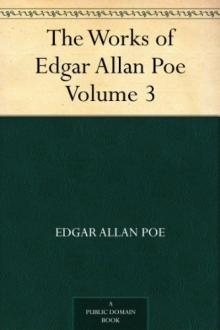 The Works of Edgar Allan Poe — Volume 3
The Works of Edgar Allan Poe — Volume 3 The Works of Edgar Allan Poe — Volume 5
The Works of Edgar Allan Poe — Volume 5 The Works of Edgar Allan Poe — Volume 4
The Works of Edgar Allan Poe — Volume 4 The Tell-Tale Heart
The Tell-Tale Heart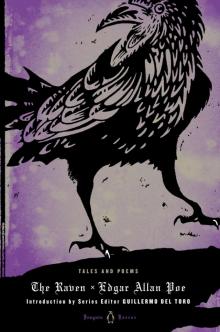 The Raven (Penguin)
The Raven (Penguin)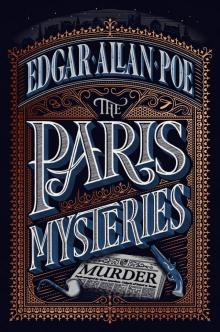 The Paris Mysteries
The Paris Mysteries Tales of Terror from Edgar Allan Poe
Tales of Terror from Edgar Allan Poe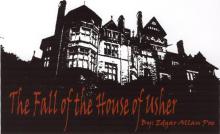 The Fall of the House of Usher
The Fall of the House of Usher The Golden Book of World's Greatest Mysteries
The Golden Book of World's Greatest Mysteries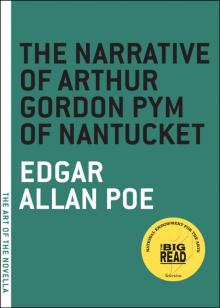 The Narrative of Arthur Gordon Pym of Nantucket
The Narrative of Arthur Gordon Pym of Nantucket Ligeia
Ligeia The Landscape Garden
The Landscape Garden Complete Tales & Poems
Complete Tales & Poems Great Tales and Poems of Edgar Allan Poe
Great Tales and Poems of Edgar Allan Poe The Colloquy of Monos and Una
The Colloquy of Monos and Una The Oblong Box
The Oblong Box Thou Art the Man
Thou Art the Man A DESCENT INTO THE MAELSTROM
A DESCENT INTO THE MAELSTROM THE MURDERS IN THE RUE MORGUE
THE MURDERS IN THE RUE MORGUE The Business Man
The Business Man The Mystery of Marie Rogêt
The Mystery of Marie Rogêt Metzengerstein
Metzengerstein The Man That Was Used Up
The Man That Was Used Up William Wilson
William Wilson The Philosophy of Composition
The Philosophy of Composition The Portable Edgar Allan Poe
The Portable Edgar Allan Poe Bon-Bon
Bon-Bon A Predicament
A Predicament The Premature Burial
The Premature Burial The Angel of the Odd
The Angel of the Odd The Man of the Crowd
The Man of the Crowd Never Bet the Devil Your Head
Never Bet the Devil Your Head The Tell-Tale Heart and Other Writings
The Tell-Tale Heart and Other Writings The System of Doctor Tarr and Professor Fether
The System of Doctor Tarr and Professor Fether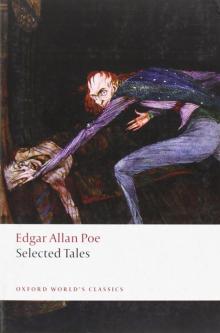 Selected Tales (Oxford World's Classics)
Selected Tales (Oxford World's Classics) Essential Tales and Poems of Edgar Allan Poe (Barnes & Noble Classics Series)
Essential Tales and Poems of Edgar Allan Poe (Barnes & Noble Classics Series) MS. Found in a Bottle
MS. Found in a Bottle Some Words with a Mummy
Some Words with a Mummy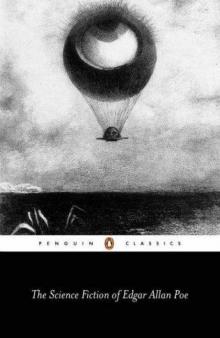 The Science Fiction of Edgar Allan Poe (Penguin Classics)
The Science Fiction of Edgar Allan Poe (Penguin Classics) King Pest
King Pest CRITICISM
CRITICISM How to Write a Blackwood Article
How to Write a Blackwood Article Mystification
Mystification Diddling Considered as One of the Exact Sciences
Diddling Considered as One of the Exact Sciences Steampunk Poe
Steampunk Poe The Literary Life of Thingum Bob, Esq.
The Literary Life of Thingum Bob, Esq. Classic Crime Collection
Classic Crime Collection Complete Stories and Poems of Edgar Allen Poe
Complete Stories and Poems of Edgar Allen Poe Berenice
Berenice The Black Cat
The Black Cat The Slender Poe Anthology
The Slender Poe Anthology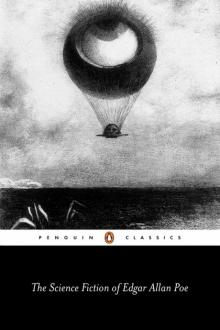 The Science Fiction of Edgar Allan Poe
The Science Fiction of Edgar Allan Poe The Assignation
The Assignation The Thousand-and-Second Tale of Scheherazade
The Thousand-and-Second Tale of Scheherazade The Raven and Other Short Stories
The Raven and Other Short Stories The Spectacles
The Spectacles Hop-Frog
Hop-Frog The Purloined Letter
The Purloined Letter Mellonta Tauta
Mellonta Tauta The Balloon-Hoax
The Balloon-Hoax Landor's Cottage
Landor's Cottage Mesmeric Revelation
Mesmeric Revelation The Pit and the Pendulum
The Pit and the Pendulum